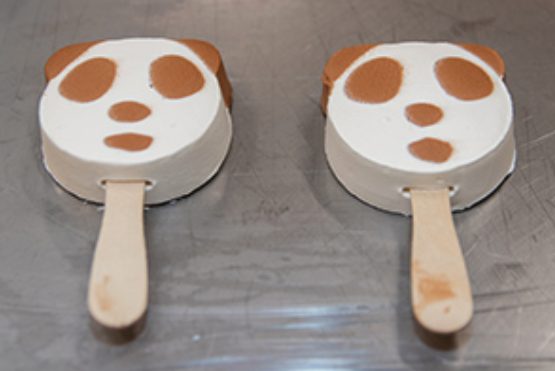Tetra Pak Processing Systems is part of the worldwide Tetra Pak group, and here they make systems for ice cream production – with 3D printing as an important ingredient.
The company has made a nozzle where you can mix several colours of ice cream and place them on the production line in a variety of shapes. That way, you can e.g. make ice cream that is shaped like a teddy bear, a panda, or a ladybug.
Previously, the nozzle was welded together by a lot of small parts in stainless steel, which were then welded up into three large sections that could be separated for cleaning. This was a very expensive and non-optimal solution.
Today, the nozzle is 3D-printed in metal-detectable nylon at the Danish Technological Institute, and it now consists of three parts – a manifold, which is always the same, and the nozzle itself, where the internal channels can easily be re-designed when Tetra Pak has to make a new ice cream. Finally, a titanium tip is printed, which protects the nozzle where the ice cream is cut off.
The advantages of 3D printing are that it is both faster and significantly cheaper. In addition, Tetra Pak has enormous design freedom, and with the low price, they can make more design iterations – previously the design was more locked due to the price.
Specifically, Tetra Pak achieved:
- 60 per cent cost reduction
- Delivery time reduced from 8 to 4 weeks
- Part consolidation from 30 parts to 3 – and a much more hygienic design
Benefits of 3D printing in this case
- Attractive price at low unit numbers
- Ultimate design freedom and flexibility with the ability to continuously optimize the design and make redesigns without large tool costs
- With 3S treatment on the 3D-printed nylon, new surface properties are added, so that the material does not absorb water and thus becomes easier to clean.
- Avoid large inventory – only the 3D files need to be in stock. The parts are produced as needed and with a short delivery time
- Printing in both metal and plastic materials that are approved for food contact
- No joints or welds where bacteria can accumulate.
(c) Picture & Links: www.dti.dk / www.tetrapak.com
Subscribe to our Newsletter
3DPresso is a weekly newsletter that links to the most exciting global stories from the 3D printing and additive manufacturing industry.






















